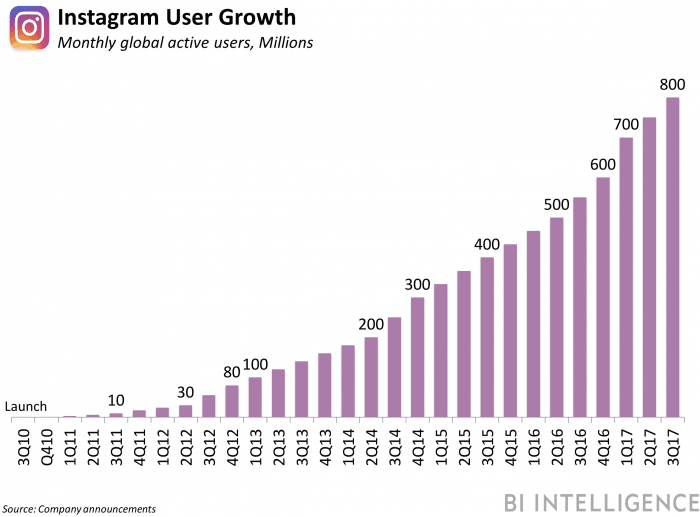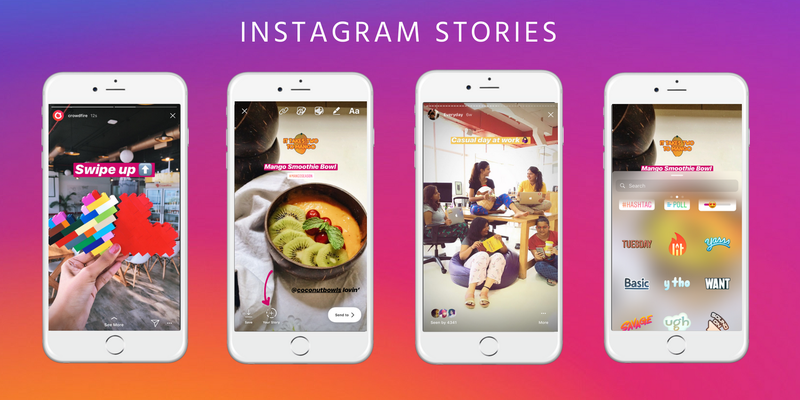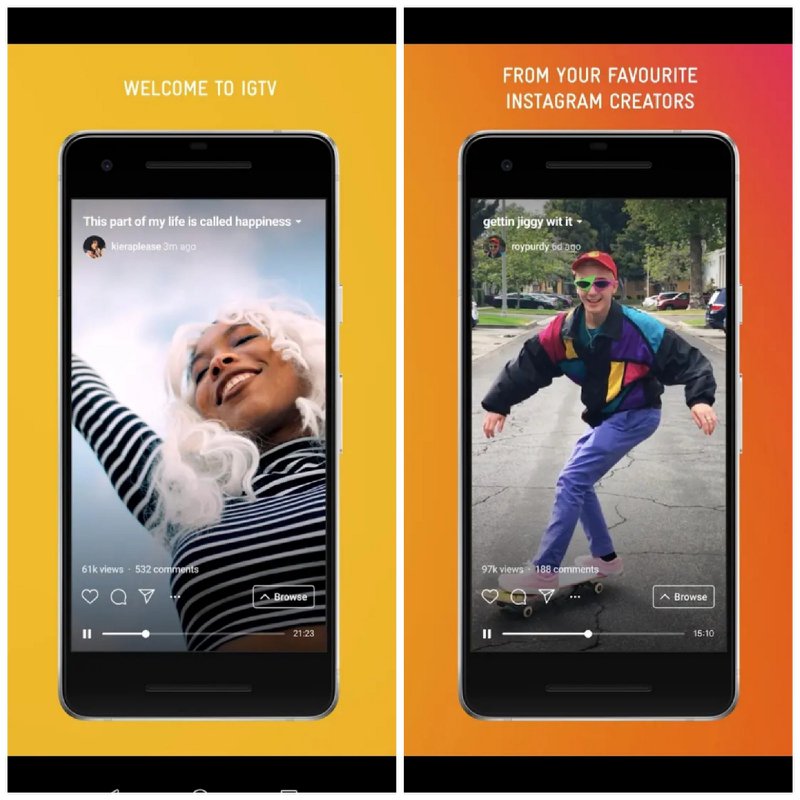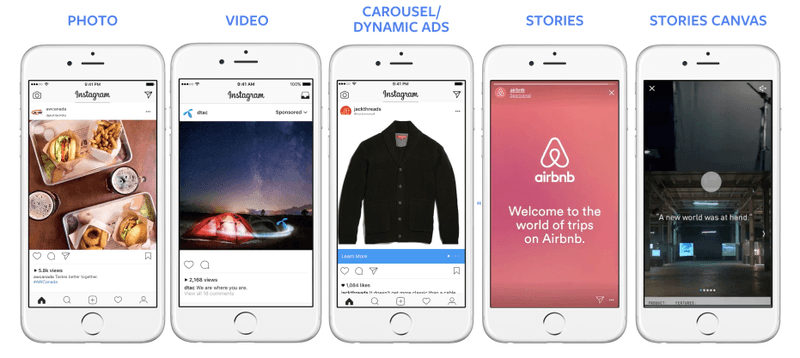How Instagram became an influencer dream machine
Iconic Products Episode 012
Instagram, it almost goes without saying, has become one of the biggest and most successful social networking platforms out there. 💪
It can be difficult to remember a time before Instagram, but the company has only been around for about 8 years.

And within those 8 years, we’ve seen some crazy stuff come from the photo and video-sharing social network.
With more than 1 billion users, thanks in part to its parent company being the single-largest social media network, Instagram has become synonymous with online photo and video sharing. 📸
But how did we get here?
After all, it’s not like people were avoiding sharing visual content before (hello YouTube, Flickr, Facebook, Twitter, etc.).
So, what makes Instagram so iconic to begin with? 🤔
Let’s jump right in.
The incredible Instagram growth story
When it came to Instagram’s successful growth, it was all about the timing. ⏳
After months of prototyping and UX testing, co-founders Kevin Systrom and Mike Krieger launched in October 2010 and saw 25,000 users join the platform in the first day.
Why was this?
Well, part of Instagram’s successful early growth has been attributed to the fact that it was launched around the time of the iPhone 4 – which was one of the first smartphones with a decent enough camera that could replace the typical point-and-shoot digital cameras of the time.
Plus, they made it easy to make the pictures from these decent-but-not-great cameras look beautiful using predefined filters. 📱
Because of this, with Apple creating a large network of iOS devices, Instagram was able to catapult to success due to the network effect.
From there, Instagram made it to one million users in three months. And that one million quickly turned to five million, then 10 million and so on…

The craziest part of this was the fact that it was all organic growth. Instagram didn’t spend a single dollar to get to the top of the app charts.
You probably know the rest of the story: about a year and a half after launching, Instagram was acquired by Facebook for $1 billion. At this point, the team was only 13 people strong, meaning there were ~2.3 million users for every 1 employee. 😲
The price tag seemed steep to some at the time, but it’s certainly made up for it, considering the company is now worth more than $100 billion. 💸
And let’s be real: Facebook buying Instagram was probably the smartest thing the company has ever done.
But it’s not like Systrom and Krieger just put together a basic sharing platform and threw it up on the app store – they understood the importance of creating a beautiful product that works well.
A beautiful, intuitive product
While the product was virtually an overnight success after they made the pivot from the Burbn to Instagram and the timing couldn’t have been more perfect with its launch, the fact remains that, at its core, Instagram is a really beautiful product. ✨
And even as its user numbers have skyrocketed, Instagram has kept its new features and design tweaks simple.
In contrast to Facebook’s busy and sometimes overwhelming mobile experience, Instagram has remained a lean app that very rarely adds major new features.
This results in a pleasant, sometimes addictive experience for users. Having a product that people want to interact with.
And beyond aesthetics, it’s intuitive and incredibly easy to use. You can post beautiful images and videos in just a few taps.

It really puts the “insta” in “Instagram.” 😉
And because Instagram recognizes that visual, fast content is what users are looking for, photos and videos take up your screen space without being overwhelming – all while still offering the ability to seamlessly navigate between pages, search, notifications and the option to upload your own content.
The Instagram feed allows users to stay up to date with friends, brands and celebrities, and offers the ability to follow hashtags on various topics you’re interested in – basically, it’s an infinite stream of beautiful, visual content.

But if you’re trying to post carefully curated content on the feed, where can other content go, such as daily updates, longer-form videos and narrative-driven content?
Enter Stories and IGTV.
Going beyond the feed
Instagram realized that content can get stale if you’re only posting photos for your curated feed, which kind of takes away from the live-update aspect that is advantageous of platforms such as Twitter and Snapchat, so they eventually launched Instagram Stories. 📖
Although it’s a blatant rip-off of Snapchat (Facebook tried to buy Snapchat a few years back), it’s a great feature.

It keeps users engaged on the app for even longer, as there’s now even more fresh content available at any given time from friends, influencers, celebrities and more.
The Stories feature is fast-paced and dynamic – you can add polls, fun face filters and a million other things to make content more fun and engaging for followers. Also, many users make their videos more interesting by adding other effects that unfortunately cannot be made on Instagram. Therefore, they use various services to add animated text to videos or merge several videos into one.
And the newly launched IGTV is also starting to gain some traction with longer-form video content, making Instagram a strong mobile-first, vertical video competitor to YouTube. 📽

On top of this, Instagram also allows users to send direct messages to friends (and celebrities, I guess, if they’re crazy enough to leave this feature on for their millions of followers).
It takes the conversation outside of the comments section and encourages more ways to connect and share/discuss content. 👫
There are also other products that Instagram has developed as separate apps that integrate with Instagram content – Boomerang, Hyperlapse and Layout. Along with plenty of other Instagram automation tools.
All of these great features further pushed Instagram to have additional outlets and content options for advertising.
But it wasn’t always like this: Instagram really took its time with its advertising platform, which leads us to the next point…
An advertisers’ paradise – will it last?
Instagram is a consumer-facing app with a lot of high-purchase-power users.
However, instead of jumping right into the ad business, Instagram really took its time with getting this right and focused on growing its user base first. 👍
And with its substantial growth, this allowed for a platform with a lot of pre-included eyeballs.
Once Instagram opened up its platform to advertising, it exploded (in a good way).
Ad spend on Instagram grew 177% year-on-year in Q2 2018 – and with all of the recent Facebook drama, it’s starting to become clear that advertisers are shifting their ad dollars from Facebook to Instagram. 🤑
This shift makes sense: Instagram is packed with aspirational content, celebrities, micro-influencers, fashion and travel content, etc. so it’s easy for it to have a lucrative advertising business.

It’s reported that Instagram’s per-follower engagement rate is 58 times higher than Facebook and 120 times higher than Twitter. Its users are also two and half times more likely to click on ads than any other social media platforms. 😳
User-generated content has become a massive part of the advertising ecosystem on Instagram as well. Users are creating their own content which brands can use to help market and advertise their own products. Still, as a business, it’s important to properly reply to Instagram messages and engage your audience.
Plenty of brands encourage customers to use hashtags when posting their own content, which is then potentially shared and, well, gives brands free advertising on top of it.
(If you want an excellent example of this, check out beauty company @Glossier – they are absolutely crushing it with leveraging user-generated content and with having a strong brand voice.) 🤘
But will all of this success last?
Good ol’ Mark Zuckerberg and Facebook run the show. So, even if advertisers are moving their money to Instagram, it’s all still going to the same place in the end.

With all of the scandals and mishandling of data to come from Facebook recently, can they keep Instagram from the same fate? Let’s hope so. 😅
Another thing that causes a bit of concern is that since the co-founders of Instagram recently left the company, Zuck is completely in charge.
Facebook is great for a myriad of reasons, but their motto of “move fast and break things” is starting to become a bit more alarming as we see how slow they are to fix the things that they break in the first place.
One thing that certainly works in their favor, however, is how addictive – and fun – Instagram is to use. 🤷♀️
Instagram is certainly an iconic product in its own right, and it’ll be interesting to see where they go next. 👊
Visual content is here to stay, and it looks like they’re running the show for the foreseeable future!
Check out our entire Iconic Products series here!
We hope you liked this post. If you did, spread the word!
For more hot stuff on startups, growth marketing and sales:
- 22+ Best Sales Podcasts You Should Check Out in 2024 - December 21, 2023
- Cold-calling scripts for actual human beings - September 21, 2023
- The 25+ Best Sales Tools to Help Your Team Be Successful - August 10, 2023
